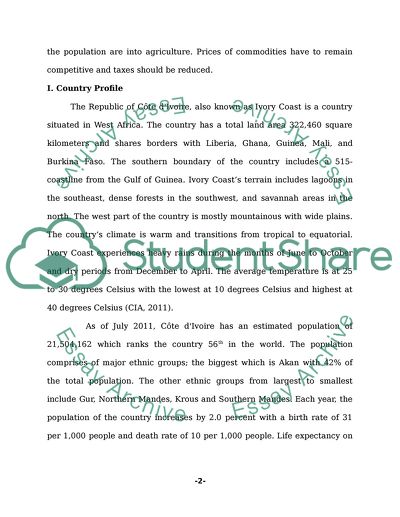Cite this document
(“Cte d'Ivoire Outline & Report Research Paper Example | Topics and Well Written Essays - 2500 words”, n.d.)
Retrieved de https://studentshare.org/geography/1392024-cte-divoire-outline-report
Retrieved de https://studentshare.org/geography/1392024-cte-divoire-outline-report
(Cte d'Ivoire Outline & Report Research Paper Example | Topics and Well Written Essays - 2500 Words)
https://studentshare.org/geography/1392024-cte-divoire-outline-report.
https://studentshare.org/geography/1392024-cte-divoire-outline-report.
“Cte d'Ivoire Outline & Report Research Paper Example | Topics and Well Written Essays - 2500 Words”, n.d. https://studentshare.org/geography/1392024-cte-divoire-outline-report.


